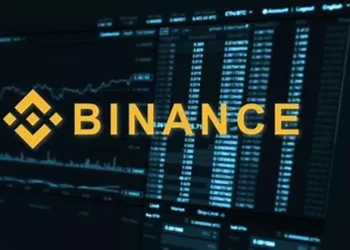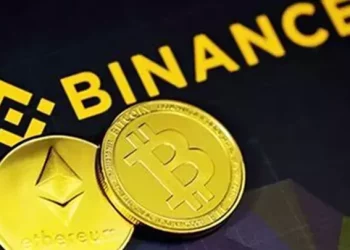Binance, one of the largest cryptocurrency exchanges globally, has established itself as a powerhouse in the digital asset space. Since its launch in 2017, Binance has grown rapidly, attracting millions of users worldwide. But how does Binance make money? In this article, we will explore the various ways Binance generates revenue and sustain its business model.
Overview of Binance
Binance is a platform that allows users to buy, sell, and trade a variety of cryptocurrencies. Its success is built on providing access to a wide range of coins, offering low trading fees, and delivering fast transaction speeds. It has become the go-to platform for anyone interested in cryptocurrency trading.
Since its inception, Binance has expanded its offerings beyond just cryptocurrency trading. The exchange now provides services like futures trading, staking, savings accounts, and more. With such a diverse range of products, it’s no surprise that Binance has become a multi-faceted company generating revenue from various streams.
1. Trading Fees
One of the most significant sources of revenue for Binance comes from trading fees. Every time a user buys or sells cryptocurrency on the platform, Binance charges a fee. The fee is a small percentage of the transaction amount, typically around 0.1%. This fee can be reduced further by using Binance’s native token, BNB (Binance Coin).
Fee Structure
Binance employs a tiered fee structure, meaning that the more you trade, the less you pay per transaction. The basic fee starts at 0.1%, but it decreases as users trade more. The platform also offers fee discounts for users who hold and use BNB to pay for their trading fees. This incentivizes users to use the token, which in turn helps Binance maintain a high volume of transactions.
The volume-based discount structure allows large traders and institutions to benefit from lower fees. Binance’s revenue from trading fees, therefore, scales with the number of active users and the volume of trades executed on the platform.
Revenue Generation from Trading Fees
The amount Binance earns from trading fees is directly linked to its trading volume. In 2021, Binance’s daily trading volume reached billions of dollars, allowing it to generate substantial revenue from these fees. For example, if Binance processes $10 billion in trades on a given day, and the average trading fee is 0.1%, the platform would earn approximately $10 million in a single day from trading fees alone.
2. Binance Futures and Derivatives
Futures trading and derivatives products provide another lucrative revenue stream for Binance. In futures trading, users speculate on the future price of a cryptocurrency by buying a contract that represents a future price. This type of trading comes with higher risk but also higher reward. Binance earns revenue from the fees associated with these transactions.
Futures Trading Fees
Binance offers both perpetual and quarterly futures contracts, which are popular among professional traders. These contracts allow users to profit from both rising and falling markets. Binance charges fees for opening and closing futures positions, which are usually lower than spot trading fees but can still add up significantly given the high volumes of trading on the platform.
Similar to spot trading, Binance offers fee reductions to users who use BNB to pay for futures trading fees. Moreover, Binance also offers competitive leverage options, allowing traders to control a larger position than their original investment. While this increases risk for traders, it also increases Binance’s potential earnings from trading fees.
3. Binance Staking and Savings Products
Another way Binance generates revenue is through its staking and savings services. Staking involves locking up cryptocurrency to earn rewards in return. When users stake certain digital assets on Binance, they receive rewards such as a portion of the staking pool’s profits. Binance also offers a savings account feature, where users can lend their digital assets in return for interest.
How Staking Works
Binance facilitates staking for several popular cryptocurrencies, including Ethereum 2.0, Cardano, Polkadot, and others. Users can stake these coins on the platform and earn a yield, typically ranging from 1% to 20%, depending on the cryptocurrency. Binance charges a small fee for this service, which is another way the platform generates revenue.
Savings Products
In addition to staking, Binance offers flexible and fixed savings products. Users can lock up their cryptocurrencies for a fixed term and earn interest. The interest rates depend on the specific cryptocurrency being deposited. Binance earns revenue from the spread between the interest it pays to users and the interest it earns from lending the assets out to other market participants.
The introduction of staking and savings products has significantly expanded Binance’s revenue model, offering passive income opportunities for users while generating more revenue for the platform.
4. Binance Launchpad and Token Sales
Binance also earns money through its Launchpad platform, where new cryptocurrency projects can raise funds through Initial Exchange Offerings (IEOs). Binance Launchpad enables new projects to launch their tokens, and Binance acts as an intermediary to facilitate the sale.
IEOs on Binance Launchpad
Binance charges a fee for hosting an IEO on its platform. The project teams pay a fee to list their token sale on Binance Launchpad, and Binance may also take a percentage of the tokens sold. Given that many successful IEOs have generated millions of dollars in funding, Binance’s revenue from this service can be substantial.
The advantage for Binance is that it becomes the go-to platform for new projects seeking funding, increasing its overall user base and liquidity. As more users participate in IEOs, Binance benefits not only from the fees charged but also from the increased trading volume generated by these new tokens.
5. Binance Coin (BNB) and Its Role in Revenue Generation
Binance Coin (BNB), the exchange’s native token, plays a central role in Binance’s revenue generation strategy. Binance launched BNB as an ERC-20 token on the Ethereum blockchain before transitioning it to its own Binance Chain. Since then, BNB has become an integral part of the Binance ecosystem, used to pay for trading fees, staking, and other services.
BNB as a Revenue Stream
Binance generates revenue from BNB in several ways. Firstly, as users buy BNB to pay for reduced trading fees, the demand for BNB increases, driving its price up. Binance also regularly burns BNB tokens, reducing the overall supply and creating scarcity, which further boosts the value of the token.
Token Buybacks and Burns
Binance periodically buys back BNB tokens from the open market and burns them, effectively removing them from circulation. This process increases the token’s value over time, benefiting both Binance and BNB holders. Binance’s commitment to regularly burning BNB tokens is a key factor in maintaining demand and increasing the overall value of the token, making it a valuable asset for both the exchange and its users.
6. Binance Smart Chain (BSC) and DeFi
Binance’s Smart Chain (BSC) is another avenue through which the exchange generates revenue. BSC is a blockchain platform that supports decentralized applications (dApps), decentralized finance (DeFi) projects, and token creation. As more projects build on BSC, Binance benefits from transaction fees and the increased usage of its ecosystem.
DeFi on Binance Smart Chain
Many decentralized finance projects, including decentralized exchanges (DEXs) and lending platforms, have launched on Binance Smart Chain due to its low fees and fast transaction speeds. Binance earns transaction fees from these dApps, which are executed on the BSC network. As the DeFi sector grows, Binance’s exposure to these products increases, contributing to its revenue growth.
BSC Token Launches
Binance also hosts token launches on BSC, and projects often pay listing fees to Binance for access to the platform’s vast user base. The use of BNB as the native token for transaction fees on the BSC network further integrates Binance’s native token into the broader ecosystem, creating a sustainable revenue loop for the platform.
7. Binance Institutional Services
Binance also serves institutional clients, offering products tailored for large-scale investors and traders. These include over-the-counter (OTC) trading, margin trading, and access to liquidity pools. Institutional services are a significant source of revenue, as large traders tend to deal in high volumes and are willing to pay premium fees for exclusive services.
OTC Trading and Margin Products
OTC trading involves large transactions conducted off the regular exchange order books. Binance earns revenue from these high-value transactions by charging a fee. Margin trading allows traders to borrow funds to amplify their positions, and Binance charges interest on these loans, adding another layer of revenue.
8. Binance’s Expansion into Traditional Financial Products
In recent years, Binance has expanded into more traditional financial services, offering products such as debit cards, crypto loans, and even fiat-to-crypto trading services. These offerings provide new revenue streams, allowing Binance to tap into markets outside the digital asset space.
Crypto Debit Cards
Binance’s crypto debit cards allow users to spend their cryptocurrencies in real-world settings. These cards can be used wherever traditional debit cards are accepted. Binance earns revenue from transaction fees, and by partnering with card networks like Visa and Mastercard, it expands its global reach.
Conclusion
Binance earns money through a diverse set of revenue streams, including trading fees, futures and derivatives, staking and savings products, token sales, and its native Binance Coin (BNB). The company has successfully positioned itself as a multi-faceted platform that offers something for everyone in the cryptocurrency space.
Its business model is designed to scale with the increasing adoption of cryptocurrency and blockchain technology. By offering low fees, access to a wide range of digital assets, and services like staking, margin trading, and institutional products, Binance has established itself as a leader in the cryptocurrency industry.
As the crypto market continues to grow and evolve, Binance’s ability to generate revenue from multiple sources positions it for long-term success. By consistently expanding its product offerings and improving user experience, Binance will likely remain a key player in the global cryptocurrency landscape.
Related topics:

















